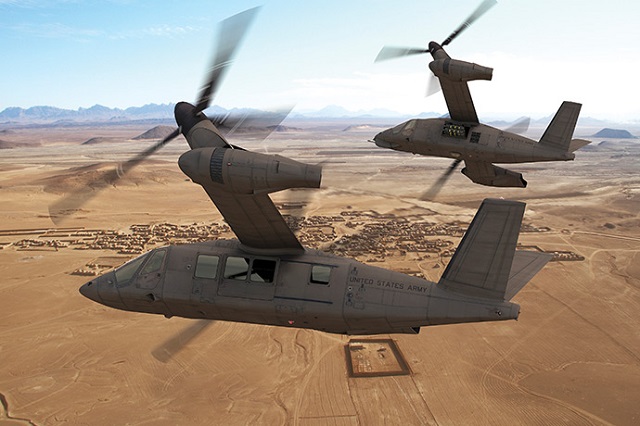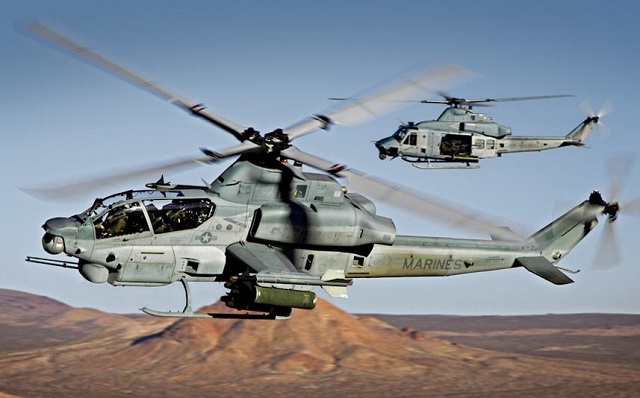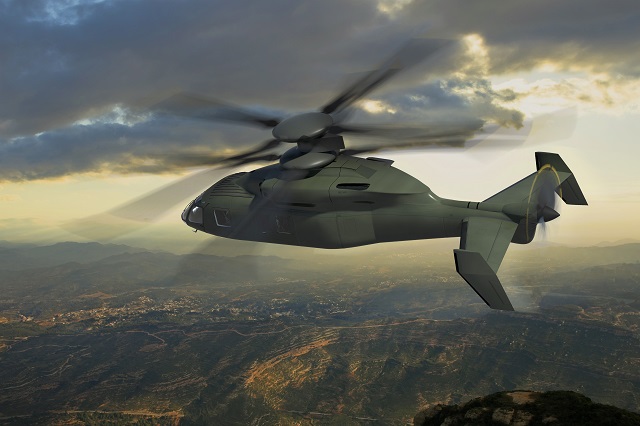Bell Helicopter and Lockheed Martin’s third-generator tiltrotor aircraft demonstrator, the V-280 Valor, might still be under construction for the US Army, but already the future vertical lift (FVL) contestant is morphing into a mid-weight, utility-attack platform.
Those attending a land warfare exposition by the Association of the United States Army in October are likely to see a V-280 mock-up on display as a utility platform one day and an attack variant the next. And, perhaps on the third day it will transform again into a medical evacuation platform.
Despite army desires to build two separate, specialised vertical-lift platforms to start replacing the Sikorsky UH-60 Black Hawk and Boeing AH-64 Apache in the 2030s, Bell thinks both missions could be performed by one identical or near-identical rotorcraft based on the Valor design.

Bell Helicopter
Chris Gehler, Bell’s director of global business development for advanced tiltrotor systems, told Flightglobal in a recent interview that the V-280 has the potential to be both a troop carrier and gunship when outfitted with different payloads, and the company is already in discussions with the US Marine Corps about the design.
“We already know the Marine Corps would like to have one aircraft replace utility and attack,” Gehler explains. “We’ve been working with them on developing an attack variant of the V-280 that could be – whether it’s wholly attack or one that can be interchangeable back between utility and attack – if not the same airframe, very identical.”
The concept of having one platform seems like a good idea on paper, and could potentially save billions of dollars by buying common parts, engines, drives and rotor systems. But the army appears unconvinced and says it wants distinct platforms for each mission.
“The medium category is going to be two aircraft with two capability sets,” Maj Gen Michael Lundy, who heads the Aviation Centre of Excellence, told BreakingDefense earlier this year. “We’re not going to build a sub-optimised aircraft."
Still, Bell thinks an AV-280 concept might gain traction, and it plans show off its utility and attack configurations on different days at AUSA. The company already builds attack and utility derivatives of the UH-1 Huey for the USMC (the AH-1Z Viper and UH-1Y Venom, pictured below), and recently demonstrated forward-firing rockets and missiles on the Bell Boeing V-22 tiltrotor.

Bell Helicopter
Gehler says tiltrotors “can be very capable attack platforms” in cruise and in hover, and the V-280’s new rotor design allows it to have side doors for troops to quickly mount and dismount. Bell and Lockheed are already looking to put common launch tubes on the V-280 that can launch rockets, missiles and even small unmanned air vehicles forward or aft with no rotor interference.
“When it’s in forward flight and cruise mode with the rotors forward, it’s still able to do forward-firing weapons,” he says. “We’ve got weapons bays that can open up and fire [Lockheed AGM-114] Hellfires from the main fuselage.”
The Bell-Lockheed Valor and Boeing-Sikorsky SB-1 Defiant – a next-generation propeller-pushed, coaxial rotor design (below) – were downselected last year for the army’s joint multi-role technology demonstrator programme, which runs through 2019. This will help to inform its FVL requirements, and the two examples are due to fly by the third quarter of 2017.

Boeing
FVL, although not currently a programme of record, is a joint programme lead by the army that is meant to usher in the next-generation of rotorcraft for the services by the mid-2030s. The Pentagon plans to make a formal FVL materiel development decision in October 2016.
Even though FVL has been a topic of considerable discussion and debate for some time now, there is currently no funding, no contracts, nor requests for proposals. The general assumption is that a future aircraft must fly further, faster and in higher and hotter conditions than today’s helicopters.
There are potentially five aircraft categories: light, medium-light, medium, heavy and ultra. The greatest demand is in the medium category, which the two JMR teams are focused on. Bell doesn’t anticipate much change between the “surrogate requirements” for its full-scale demonstrator and the final FLV list.
Source: FlightGlobal.com



















